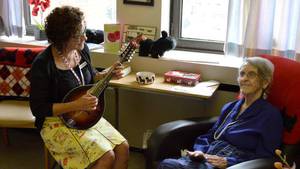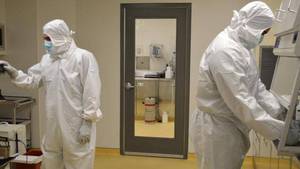Dr. Amir AbdelWahab’s study of an intricate procedure done to treat dangerous heart rhythms that lead to cardiac arrest is just one part of the innovative research taking place at the QEII Health Sciences Centre.
“We try to find the short circuits in the heart,” says Dr. AbdelWahab, a cardiac electrophysiologist, or heart rhythm specialist.
Dr. AbdelWahab and the cardiology team at the QEII’s Maritime Heart Centre know that providing the best care for patients means constantly finding new ways to advance how they deliver that care.
Much of their research focuses on treating life-threatening arrhythmias and reducing the risk of sudden death.
Sudden cardiac arrest is the leading cause of death in Canada. In Nova Scotia, an estimated 1,000 people die from it annually. Most of those deaths are caused by ventricular tachycardia (VT), a short circuit in the lower chambers of the heart.
Catheter ablation is a standard procedure Dr. AbdelWahab and his colleagues use to treat abnormal heart rhythms by inserting wires in the groin area and moving them up the body into the heart, where they find and cauterize short circuits with the help of real-time software.
Still a complex and challenging procedure that requires two cardiac electrophysiologists, Dr. AbdelWahab is studying ways to make the procedure better.
“We need to be really accurate about where the abnormal rhythm is coming from,” he says. “It is not usually just one spot that causes the abnormality.”
With a research grant from the Maritime Heart Centre Innovation Fund, funded by QEII Foundation donors, Dr. AbdelWahab is conducting the Real-time Automated Program for IDentification of VT origin – Pilot Study (RAPID-VT Pilot).
His research has already shown that on the left side of the heart, the catheter ablation procedure using three-dimensional mapping software is accurate in finding and treating the spots in the heart causing the bad heartbeats. Now, Dr. AbdelWahab would like to determine if the same accuracy exists on the right side of the heart.
“The idea is to make the procedure faster and more effective,” says Dr. AbdelWahab, who studied medicine in Egypt before doing his fellowship at the QEII and joining the cardiology team in 2014.
In the past, the procedure required medical specialists to place close to 130 electrodes on a patient’s body in order to find the abnormal heart rhythms. By using software developed in partnership with Dalhousie University, Dr. AbdelWahab says he no longer needs electrodes during the procedure and that it is now accurate within 10 millimetres. The software creates a three-dimensional model of the patient’s heart using information obtained from a CT scan.
During the procedure, which takes between four and six hours to complete, the software captures in real time where the catheter is in the heart. A large monitor beside the patient projects the detailed images for Dr. AbdelWahab and his colleagues to see during the procedure. They also use an X-ray machine that provides images of the front and back of the patient.
For the RAPID-VT Pilot, Dr. AbdelWahab has already studied seven patients, but would like to look at five more. He expects to have results from those patients within the next six months. At the QEII, about 50 catheter ablation procedures are done every year to treat ventricular tachycardia.
Dr. AbdelWahab’s study complements other cardiology research taking place at the QEII, says Dr. John Sapp, a cardiac electrophysiologist and director of the heart-rhythm service.
“Dr. AbdelWahab is really dedicated to pushing the envelope and finding better solutions,” says Dr. Sapp.
<MW,103>Dr. Sapp is currently leading VANISH-2, a clinical trial that will provide more information about VT and catheter ablation, funded by the Canadian Institutes of Health Research and the QEII Foundation.
Dr. AbdelWahab is playing an active role in the $3-million, multi-centre clinical trial that will determine whether catheter ablation should be the first line of treatment, before aggressive antiarrhythmic drug therapy, for VT.<MW>
“We are a research hospital,” says Dr. Sapp. “We don’t want to be happy with the status quo.”








